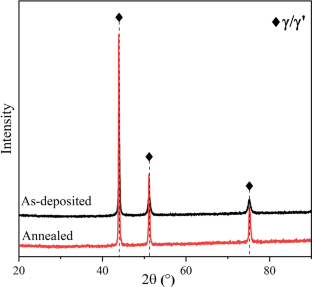Investigation on the Oxidation Behavior of the NiCrAlY Bond-Coat with Low Al Content Sprayed by High Velocity Oxygen Fuel Method
Abstract
The elemental interdiffusion between the bond-coat in the thermal barrier coatings (TBCs) system and the superalloy substrate has emerged as a critical factor affecting the service life of the TBCs-coated turbine blades in aero-engines. To address this issue, a NiCrAlY bond-coat with low Al content and high Y content was designed and sprayed on the superalloy using high velocity oxygen fuel method. The performance of the as-deposited coating was assessed through isothermal oxidation test at 1000 °C for durations ranging from 10 to 1000 h. The results revealed the precipitation of c-Y2O3 particles at the grain boundaries of the as-deposited coating. These particles appeared to impede the diffusion of coating elements, resulting in improved oxidation resistance. The oxidation mechanism of the as-deposited coating on the flat region was divided into two stages: the preferential oxidation of Al and the formation of spinel; the inward growth of alumina along with outward growth of spinel. In the concave area, the oxidation mechanism was characterized by a rapid thickening of the spinel phase and NiO, attributed to the thinner coating and special Ni diffusion method. Semi-molten particles formed an overlaying structure after oxidation as the elements diffused in surrounding areas, with only the Ni element remaining inside it. The designed low Al content NiCrAlY coating exhibits excellent oxidation resistance at 1000 °C.



 求助内容:
求助内容: 应助结果提醒方式:
应助结果提醒方式:


